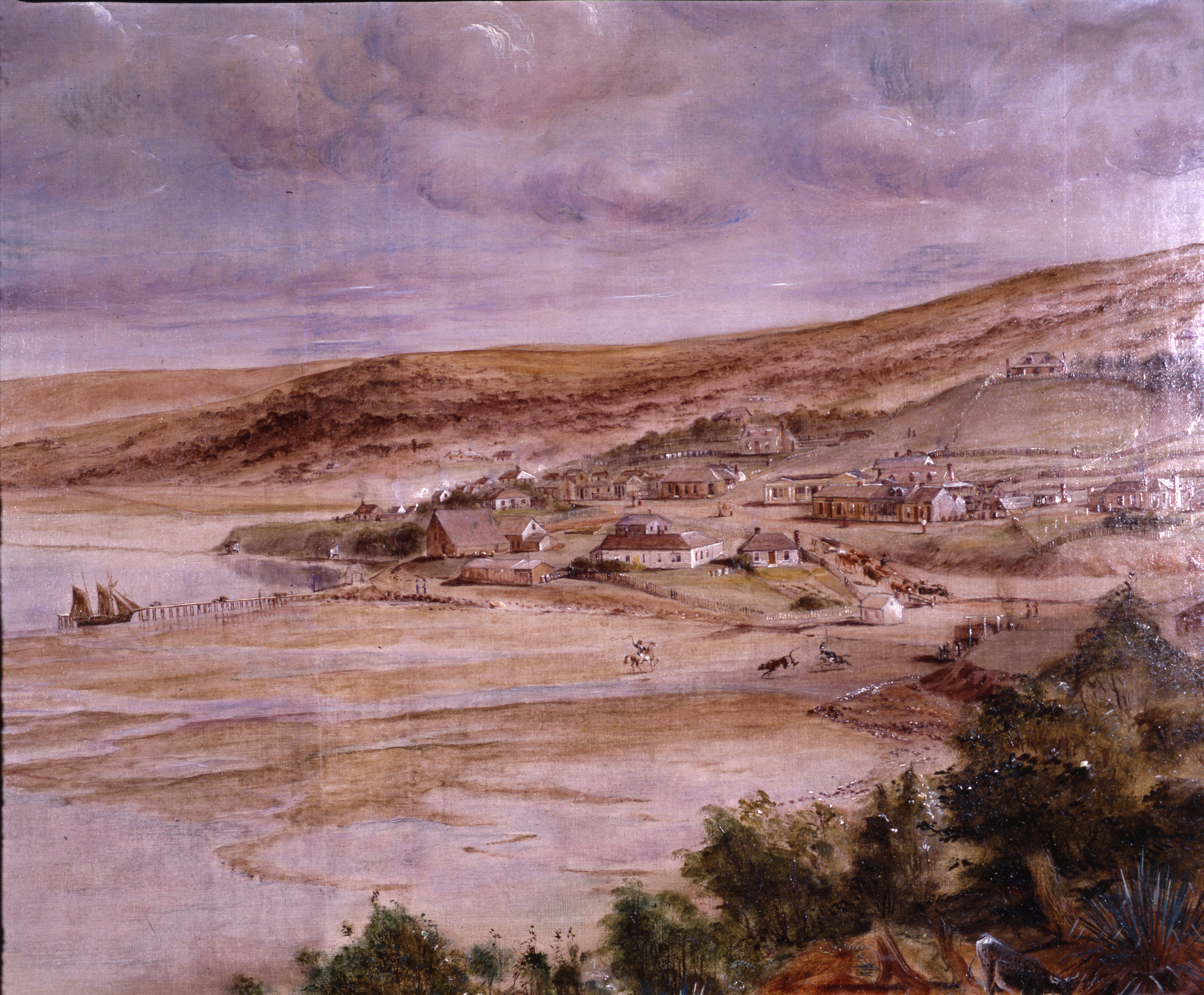When Dunedin’s history museum was rebranded as “Toitū Otago Settlers Museum” in 2012, there was some surprise at the unfamiliar name, which seemed unconnected to the “Early Settlers” heritage. In fact “Toitū” takes us right back to Dunedin’s beginnings. When Otago’s pioneers first stepped ashore in 1848 onto the site at the head of Otago harbour around which Dunedin would be developed, their feet squelched into the mud of the Toitū estuary. This fabulous painting, created some eight years later by the surveyor John Turnbull Thomson, shows us the Toitū stream as the first settlers knew it. You can see here how much this now forgotten waterway defined the site of the embryonic settlement.
The Toitū stream ran down the hills into MacLaggan Street, crossed underneath the present-day Southern Cross hotel, then flowed into the harbour, creating the ragged shoreline, shingly beach and shallow estuarine waters that characterised early Dunedin. All these features would soon disappear beneath the settlers’ land reclamation and construction projects. Indeed, the very first public works project in Dunedin – forming Princes Street - had involved creating a primitive bridge over the Toitū just near where the Cargill monument stands today. By 1858, town development had progressed to the point where the stream could be channeled completely underground, and it was soon forgotten.
The Toitū is still there of course, flowing quietly beneath our feet as we walk along Princes Street or through the Exchange. By bringing its name to the fore, the Museum has taken us back to the very earliest days of the settlement, and to the place where the “Early Settlers” took their first tentative steps through the mud. To where, in fact, Dunedin began. What could be more appropriate for a museum concerned with our history? Thomson’s marvelous painting can be seen in the Museum hanging directly opposite the Cobb and Co coach.


Where Dunedin began